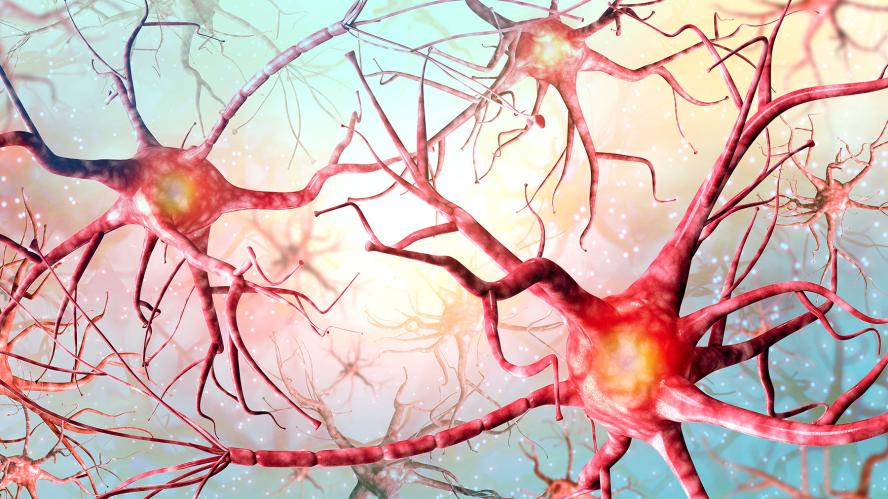-
About
- Departments & Offices
-
Academics
- Public Health
- Biomedical Sciences
- Physician Assistant
- Special Master’s (MBS)
-
Admissions & Financial Aid
- Tuition & Fees
-
Student Experience
-
- Student Resources by Program
- Academic & Student Support
- Wellness & Wellbeing
- Student Life
- Events & Traditions
-
-
Research
- Research Labs & Centers
- Tufts University-Tufts Medicine Research Enterprise
-
Local & Global Engagement
- Global Health Programs
- Community Engagement
Potential Treatment Target for Rare Form of Infant Epilepsy Identified
Research from Tufts University School of Medicine and the Graduate School of Biomedical Sciences lends hope to families of patients with infantile spasms syndrome

New research from Tufts University School of Medicine and the Graduate School of Biomedical Sciences suggests that the timing of the death of certain inhibitory neurons in the brain shortly after birth may be at least partly to blame for infantile spasms syndrome (ISS), a rare but devastating form of epilepsy that develops most frequently between four and eight months of age but can emerge within weeks of birth until ages 4 or 5.
Their research in mice suggests both a potential new target for treatment and raises the hope that, in the future, early diagnosis and treatment could detect and prevent some of the most significant impairments associated with the syndrome. The research was published Jan. 30 in the Journal of Neuroscience.
Approximately 2,000 to 2,500 new cases of infantile spasms syndrome are diagnosed each year. In most cases infants appear to be developing normally until they develop seizures that look like a sudden bending forward of the body and stiffening of the arms and legs. Some infants arch their backs as they extend their arms and legs. Some have hundreds of these seizures each day. While infantile spasms usually stop by age five, they are replaced by other types of seizures. Infants and children with the condition frequently have abnormal electroencephalograms (EEGs), significant neurological impairments, and are at higher risk for autism.
“Early treatment of seizures can improve outcomes, but most available therapies are not effective and can cause significant complications, including blindness,” explains the study’s corresponding author, Chris Dulla, associate professor of neuroscience at the School of Medicine and program faculty at the Graduate School of Biomedical Sciences.
Neuronal Balancing Act
Research on the disease has focused on the role played by various pathways that control the balance between two types of neurons in the brain: excitatory and inhibitory neurons. Most neurons in the brain are excitatory, activating other neurons and creating electrical signals to drive brain functions. Inhibitory neurons restrain that neuronal firing.
While the molecular causes of ISS are not well defined, disrupted inhibitory GABAergic network development has been implicated in multiple mouse models.
GABA (gamma-aminobutyric acid) interneurons are the main inhibitory neurons in the central nervous system, and they play a critical role in a variety of processes including cognitive function and information integration and processing. Dysfunctional GABA interneuron activity can disrupt the balance of excitatory and inhibitory neurons in the cerebral cortex of the brain.
Researchers have identified several genes associated with ISS, all of which are linked to the b-catenin signaling pathway, which helps to regulate the balance of excitatory and inhibitory neurons in the brain. “During normal brain development, too many inhibitory interneurons are made, but then disappear,” explains Dulla. “Research suggests that an overabundance of interneuron death seems to occur at the same time as the spasms associated with ISS develop.”
In their research, the Tufts scientists focused their studies on the b-catenin signaling pathway in a mouse model, originally developed by neuroscientist and School of Medicine professor Michele Jacob, that develops a condition analogous to ISS. The mice also demonstrate intellectual disabilities and behavioral abnormalities corresponding to human autism spectrum disorder.
The researchers determined that cortical parvalbumin-positive interneuron development and function are altered in the mice. These neurons are the largest class of GABAergic, inhibitory neurons in the central nervous system.
Their research also suggests that it may be the timing of inhibitory neuron cell death which is important, not just the fact that it happens. “If the inhibitory neurons are dying too quickly, this enables the excitatory neurons to go wild,” Dulla explains.
“We saw that the levels of excitatory neuronal activity were increased at all ages,” notes Rachael F. Ryner, the lead author of the study who received her PhD from the Graduate School of Biomedical Sciences in 2022. “But the interplay between excitatory and inhibitory neurons is extraordinarily complex. Because we see a couple of treatments that work in some children but not all, we believe ISS really has a wide range of causes.”
The new research raises a myriad of questions. If scientists find one or more mechanisms that cause inhibitory neurons to die too quickly, can that process be slowed or timed appropriately to prevent at least some ISS cases from developing, or at least minimize the damage ISS is associated with? Because multiple genes seem to be involved in the development of ISS, should genetic screening be performed to identify infants at risk? And lastly, could those at risk then be given specialized EEGs early in life to detect abnormal brain events, and successful treatments provided before permanent damage occurs?
Citation: Research reported in this article was supported by the National Institute of Neurological Disorders and Stroke under award R01-NS100706, CURE Epilepsy as part of the Infantile Spasm Initiative, and The American Epilepsy Society. Complete information on authors, funders, and conflicts of interest is available in the published paper.
Department:
Neuroscience